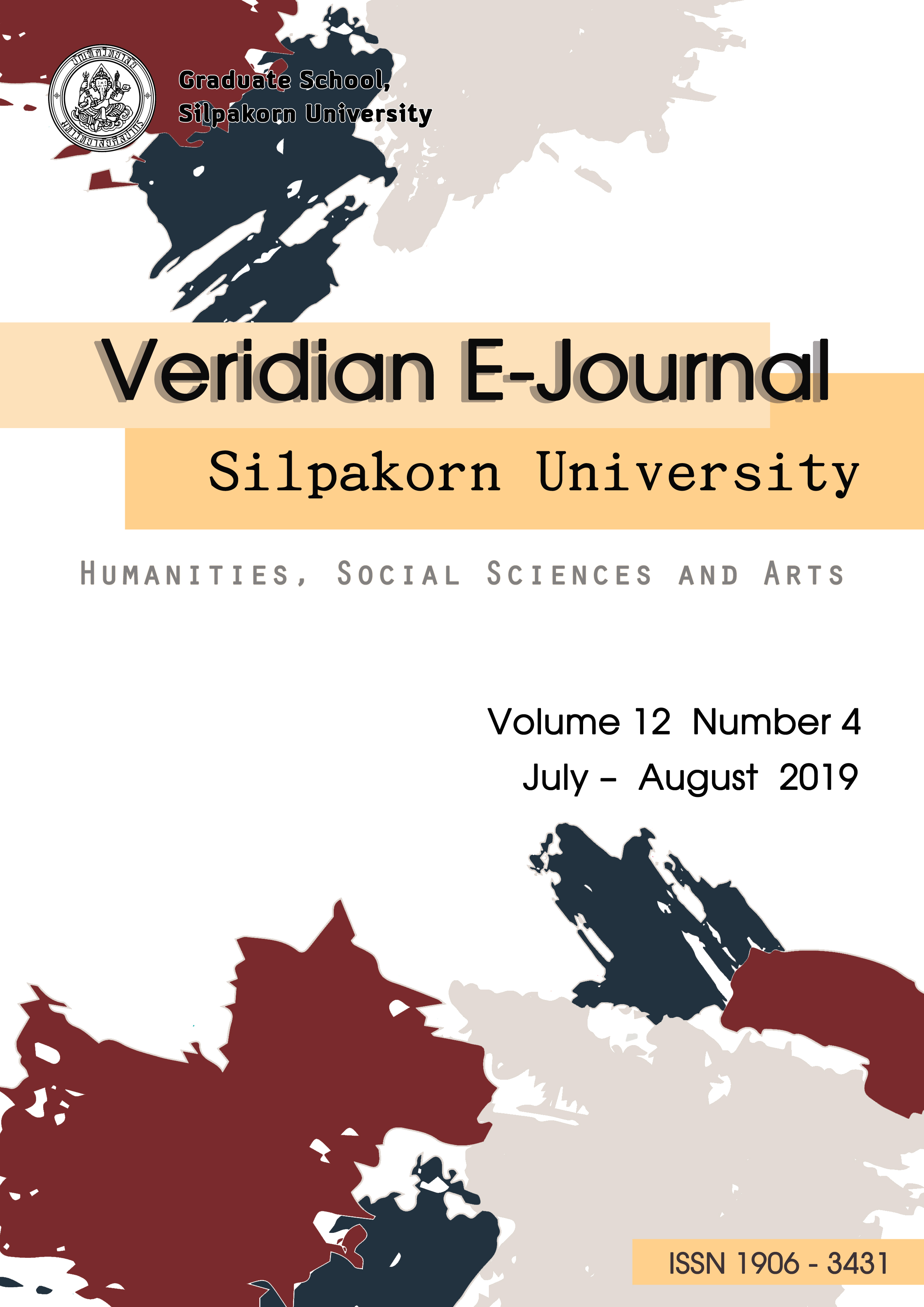การพัฒนาการจัดการเรียนรู้ด้วยรูปแบบซิปปาที่ส่งเสริมความสามารถในการแก้ปัญหาและการเชื่อมโยงทางคณิตศาสตร์ เรื่อง ลำดับและอนุกรม ของนักเรียนชั้นมัธยมศึกษาปีที่ 5 (The Development of Learning Management Based on CIPPA Model for Enhance Mathematical Problem Solving and Connection Abilities in Sequence and Series of Mathayomsuksa 5 Students)
Main Article Content
Abstract
การวิจัยครั้งนี้มีวัตถุประสงค์ 1) เพื่อเปรียบเทียบความสามารถในการแก้ปัญหาทางคณิตศาสตร์ เรื่อง ลำดับและอนุกรม ของนักเรียนระดับชั้นมัธยมศึกษาปีที่ 5 ที่เรียนรู้ด้วยรูปแบบการสอนแบบซิปปากับเกณฑ์ร้อยละ 70 2) เพื่อเปรียบเทียบความสามารถในการเชื่อมโยงทางคณิตศาสตร์ เรื่อง ลำดับและอนุกรม ของนักเรียนระดับ ชั้นมัธยมศึกษาปีที่ 5 ที่เรียนรู้ด้วยรูปแบบการสอนแบบซิปปากับเกณฑ์ร้อยละ 70
กลุ่มตัวอย่างที่ใช้ในการวิจัยครั้งนี้ ได้แก่ นักเรียนชั้นมัธยมศึกษาปีที่ 5 โรงเรียนตูมใหญ่วิทยา อำเภอ คูเมือง จังหวัดบุรีรัมย์ ภาคเรียนที่ 2 ปีการศึกษา 2561 จำนวน 30 คน ซึ่งได้มาจากการสุ่มแบบกลุ่ม (Cluster random Sampling) เครื่องมือที่ใช้ในการวิจัย ประกอบด้วย แผนการจัดการเรียนรู้แบบซิปปา (CIPPA MODEL) เรื่อง ลำดับและอนุกรม ชั้นมัธยมศึกษาปีที่ 5 แบบทดสอบวัดผลสัมฤทธิ์ทางการเรียน เรื่อง ลำดับและอนุกรม และแบบทดสอบวัดความสามารถในการแก้ปัญหาและการเชื่อมโยงทางคณิตศาสตร์ เรื่อง ลำดับและอนุกรม สถิติที่ใช้ในการวิเคราะห์ข้อมูล ได้แก่ ร้อยละ ค่าเฉลี่ย ส่วนเบี่ยงเบนมาตรฐาน และการทดสอบสมมติฐานใช้ t – test for one sample และ z – test for population proportion
ผลการวิจัยปรากฏดังนี้
1) นักเรียนที่ได้รับการจัดการเรียนรู้แบบซิปปา มีความสามารถในการแก้ปัญหาทางคณิตศาสตร์ เรื่อง ลำดับและอนุกรม สูงกว่าเกณฑ์ร้อยละ 70 อย่างมีนัยสำคัญทางสถิติที่ระดับ .05
2) นักเรียนที่ได้รับการจัดการเรียนรู้แบบซิปปา มีความสามารถในการเชื่อมโยงทางคณิตศาสตร์ เรื่อง ลำดับและอนุกรม สูงกว่าเกณฑ์ร้อยละ 70 อย่างมีนัยสำคัญทางสถิติที่ระดับ .05
The purposes of this research were 1) to compare the ability to solve mathematical problems of Mathayomsuksa 5 students on the subject of sequence and series after learning with the CIPPA model with the set criterion of 70 percent, 2) to compare the ability to mathematical connection of Mathayomsuksa 5 students on the subject of sequence and series after learning with the CIPPA model with the set criterion of 70 percent. The sample group was Mathayomsuksa 5 students in Toomyaiwittaya school, Kumuang, Buriram, in semester 2, 2018, selected amount 30 people from 1 classes by cluster random sampling. The instruments used for colleting data were lesson plans by using CIPPA model of Mathayomsuksa 5 students on the subject of sequence and series and problem solving ability test and connection in mathematics, sequences and series Data were analysed by using percentage, mean and standard deviation. The t – test for one sample and z – test for population proportion were used for the hypothesis testing.
The results of the study were as follows:
1) The ability to solve mathematical problems on the subject of sequence and series of Mathayomsuksa 5 students not less than 70 percent of all students is higher than 70 percent after learning with the CIPPA model, criterion at .05 level of significance.
2) The ability to mathematical connection on the subject of sequence and series of Mathayomsuksa 5 students not less than 70 percent of all students is higher than 70 percent after learning with the CIPPA model, criterion at .05 level of significance.
